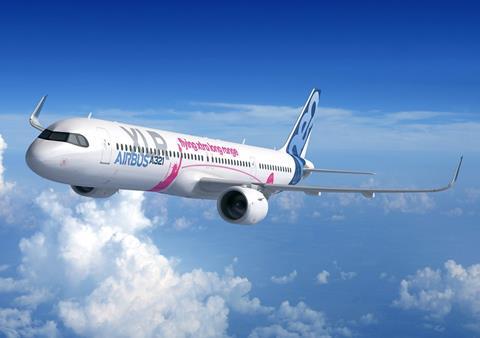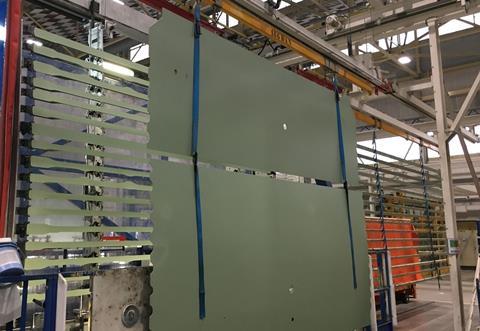Airbus is establishing a separate production line at its Hamburg Finkenwerder plant which will be dedicated to assembling the aft fuselage of the long-range A321XLR.
This fuselage section is heavily modified from the regular A321neo, featuring a newly-designed integrated large rear centre tank and fuel-mangement system which will be specific to the new model.
Airbus wants to set up the separate line to enable production of this particular section to achieve maturity without the risk of disrupting the flow of A320neo-family assembly at the plant.
It will install jigs and tooling for the aft fuselage line in the Finkenwerder facility’s hall 260, on the shore of the river Elbe, where Airbus previously manufactured fuselage sections for the A380.
The airframer says this “deliberate decoupling” of the A321XLR aft fuselage and the single-aisle production line will provide the flexibility to enable the specialised fuselage work, from next year, to ramp up independently and achieve maturity without affecting output of other variants.

A321XLR programme chief Gary O’Donnell says the “stable factory” will allow longer initial manufacturing cycle times while the logistics of assembling and integrating the rear centre tank smooth out.
“This new approach will avoid us putting at risk the rest of single-aisle production,” he says. “Once we’re happy that everything is mature and up-to-speed, we can transfer it with confidence into the main production system.”
Airbus believes the A321XLR, which will serve as a bridge between its single- and twin-aisle aircraft range, is a core part of its strategy and the decision to keep to the development schedule, despite the air transport crisis, underlines its importance to the airframer.
“The XLR is one of the programmes we’ve decided to fully maintain in spite of [the pandemic],” said Airbus chief executive Guillaume Faury during a briefing in early January.
“We’re very excited as we see it sits very well with market needs,” he stated. With long-haul recovery likely to lag short-haul, Faury argued that the XLR – offering long-range with single-aisle capacity and economics – could become “even more” important to customers post-crisis.
Chief commercial officer Christian Scherer, at the same briefing, said the A321XLR “continues to enjoy very strong market demand”.
“I wish I had more,” he said, stressing that the variant was “not a niche aircraft”.
Airbus expects to commence major component assembly of the first A321XLR – bringing together the forward, centre and aft fuselage sections and the wings – over the “second part” of this year. It says a “large proportion” of the engineering design drawings had been released by the beginning of 2021.

“Production of components for the first A321XLR flight-test aircraft is progressing through the sites all across the world, for large and small components as well as systems,” says O’Donnell.
“In parallel many parts are already being tested and demonstrated – on both the aircraft structure and on the systems side – to validate the functionality of all those first aircraft components.”
Airbus’s Nantes facility is progressing with manufacturing the first centre wing-box, which will be transferred to Finkenwerder this year, while Premium Aerotec is completing the initial rear centre tank components and preparing for its assembly at its Augsburg centre, and producing other centre- and aft-fuselage parts at Nordenham and Varel.
Nose and forward fuselage sections for the A321XLR are being built at Stelia Aerospace and these will be sent to St Nazaire for assembly once complete. Airbus’s UK plant at Broughton is handling the wing production in co-operation with Spirit AeroSystems and FACC which are dealing with new high-lift devices for the aircraft.



















